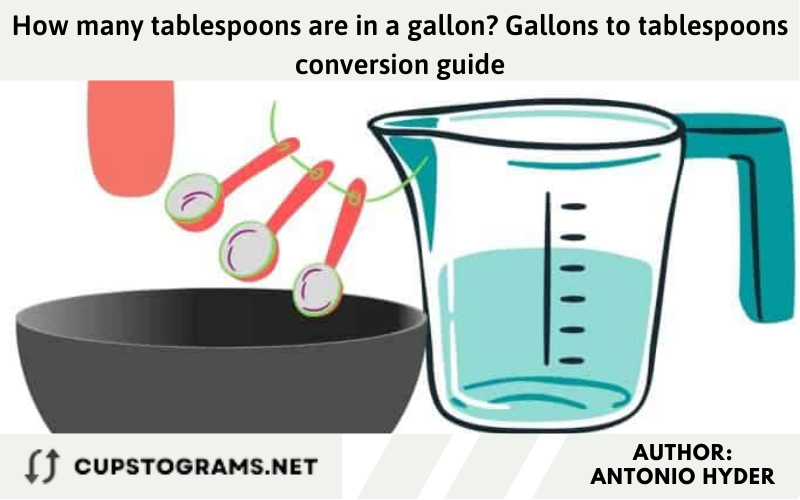Bread flour vs all purpose flour: What is the main difference? Can we substitute bread flour for all-purpose flour?


When you’re baking, it’s important to choose the right type of flour for your recipe for the best results. Two flours that are commonly used in baking: Bread flour vs all purpose flour. If you’re wondering what sets them apart and which one to use when, this post is here to break things down for you.
- How many cups in a pound? How to convert pounds to cups and vice versa?
- How many tablespoons in an ounce? Quick guide to converting 1 oz to tbsp
- How many ounces in a quart? Convert quarts to fluid ounces and dry ounces
- Can you put glass in microwave? Useful tips when putting glass in the microwave
- How many cups in a pint? How many cups in a quart or a gallon?
Antonio Hyder will cover different qualities each flour has, their relative strengths and weaknesses. We also offer the answer to the commonly asked question, “can we substitute bread flour for all-purpose flour?” Read on!
You are watching: Bread flour vs all purpose flour: What is the main difference? Can we substitute bread flour for all-purpose flour?
Bread flour vs all purpose flour: What is the main difference?
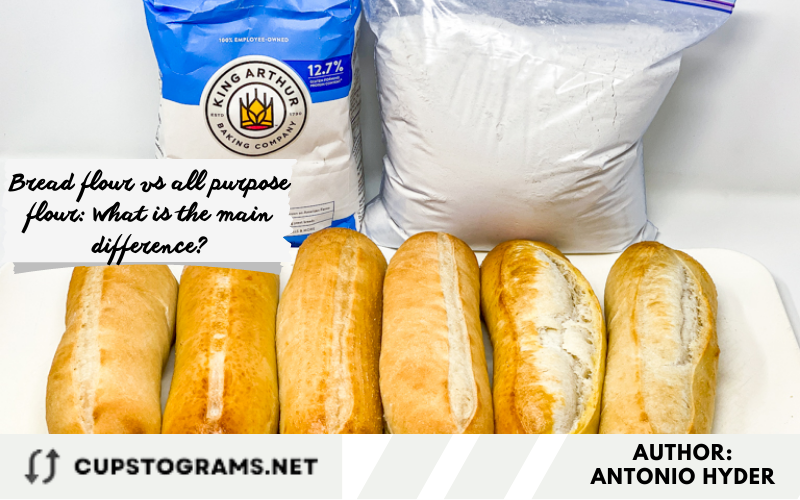
What is the main difference between bread flour and all-purpose flour? Bread flour and all purpose flour are both refined products devoid of germ and bran.
However, the difference of bread flour and all purpose flour is their protein content; bread flour flour has a higher protein content than all purpose flour. So why exactly does this matter?
Bread flour is created from harder red spring wheat, resulting in a higher protein content. On the other hand, all purpose flour uses softer or harder red varieties of winter wheat that are lower in protein.
Higher-protein flours provide a greater proportion of gluten and a stronger dough for products like bread and the reverse is true for use in cakes and biscuits. The flour category is primarily focused on wheat flour as plain flour (also referred to as all-purpose flour) or self-raising flour with added raising agents, either milled as white flour (utilising just the endosperm of the grain) or whole wheat or wholemeal flour (which includes all parts of the grain) for use in home baking.
As cited in www.ncbi.nlm.nih.gov
Why is the protein content so important?

The protein content of wheat berries varies depending on factors such as color, growth time, and texture.
Soft wheat generally contains 7%–9% proteins and is usually used for baking pastries. Red spring wheat varieties that have proteins between 10.5%-13.5% are perfect for producing all purpose flour and bread flour.
Protein in flour is a key component when baking as it establishes the dough’s strength and elasticity. The more protein present in wheat, the higher the sense of structure and flexibility your dough will possess.
Conversely, lesser amounts of protein create flakier pastries like cakes, cookies, or pie crusts. They are lighter and softer than those created with high-protein flour mixtures.
- All Purpose Flour (APF) is comprised of 10%–12% protein.
- Bread flour contains a substantial amount of protein, ranging from 12%-13.5%.
Do you know what all-purpose flour is?

All purpose flour is the baking equivalent of a workhorse; it’s incredibly versatile and used in nearly all types of baking recipes. The protein content of all purpose flour can vary from brand to brand, ranging from 9% to 12%.
King Arthur’s purpose unbleached flour boasts a high protein content of 11.7%, which is towards the higher end for all purpose flours. However, it still falls in the mid-range overall.
Whether you opt for cake flour (around 9% protein) or pastry flour (about 8% protein), your baked goods will be light and fluffy. But, truthfully, all purpose flour is a perfectly acceptable choice as well!
If your guests aren’t professional bakers trying a light chiffon cake, they won’t notice the difference between flours.
What about bread flour?
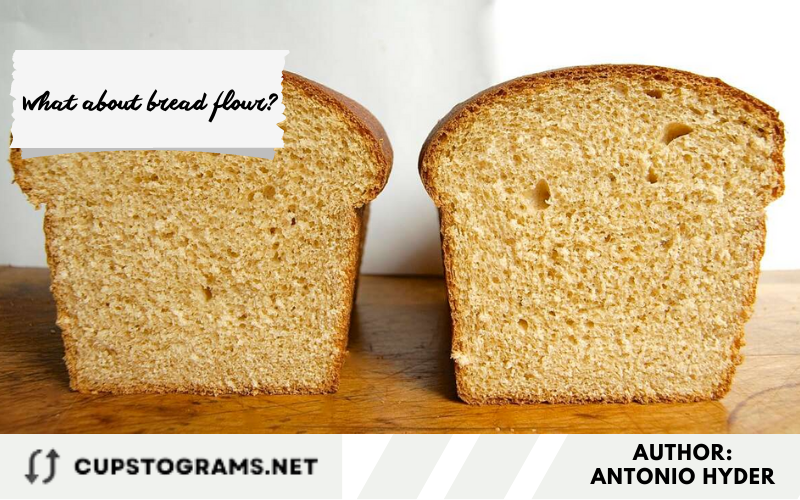
Bread flour has more protein (ranging from 12–14%) than APF. It is the perfect choice for making delicious and unique recipes like sourdoughs, brioches, English muffins, and more.
The strength and elasticity imparted by the high protein content help expand doughs while trapping CO2 bubbles. This create a light texture in your finished products.
See more : Is ceramic microwave safe? How to check if a ceramic dish can go in the microwave?
For added chewiness in noodles, bread flour makes a great choice, like these homemade ones from Hetty McKinnon. King Arthur Flour’s Unbleached Bread Flour has 12.7% protein content, which is higher than its all-purpose counterpart.
Bakers sometimes choose high-gluten flour with 14% protein content to create chewy and dense doughs. This type of flour is an alternative to standard bread flour which works well for everyday use.
Unless you are an avid pizza or crusty bread maker, bread flour is your best choice for yeast dough baking. It, along with its high-gluten complement, has an off-white color. Generally, bread flour has 1-2% less protein than high-gluten flour.
As cited in extension.psu.edu
Is it possible to substitute all-purpose flour for bread flour?

What’s the difference between bread flour and APF? Bread flour contains more protein than all-purpose flour. However, in most cases, you can substitute one for the other with successful results.
Baking with bread flour instead of APF can impact the outcome of your recipe. However, if you must use one in place of the other, heed this advice.
If you use ap flour for recipe that calls for bread flour, it will still bake up fine but won’t have as much chew or structure.
Conversely, be cautious not to overwork dough made by substituting all purpose flour. Its higher protein content can create more gluten and make a tougher finished product.
Substitute tip:
It’s important to note that bread flour absorbs more water than APF. Therefore, it is highly recommended to decrease the amount of liquid when using a substitution. Because of this change, the dough may become stickier and less elastic. It may also not hold its shape as well or rise as well.
Can we substitute bread flour for all-purpose flour?

Can I use bread flour instead of all-purpose flour? Yes, but only when you desire to elevate the qualities (chewiness, structure, loftiness, and elasticity). If you’re looking to up the chewiness in your pizza recipe, substitute the APF with bread flour—it’s that easy!
Many popular recipes call for all purpose flour, given its accessibility and ease of use when cooking at home. However, if flavor is what you crave, then try adding a bit of extra texture by swapping out this ingredient.
If you’re a fan of chewy chocolate chip cookies, then using bread flour is an excellent way to customize the recipe for your preference. Try replacing some of the regular flour with bread flour and see how the end result changes.
When it’s not ideal to use bread flour:
It is best to avoid replacing APF with bread flour in delicate baked goods. This is because these recipes require low gluten development for optimal results.
Substitute tip:
When you use bread flour in place of APF, add a bit more water or liquid as the dough will be drier and tougher to develop. You can anticipate greater elasticity in your dough and improved strength.
Does bread flour provide a greater rise than all-purpose flour?

Baked goods made with APF will rise enough, but those made with bread flour will be stronger and better able to keep their shape.
When is it best to bake with bread flour or all-purpose flour?
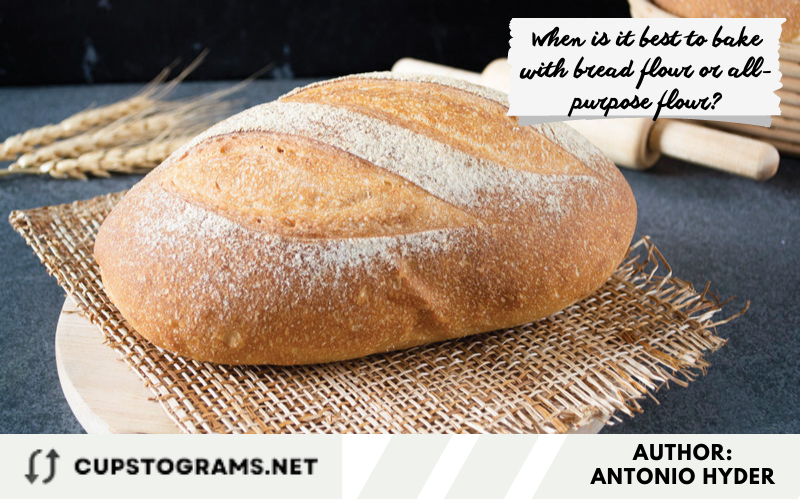
You may be asking, “If bread flour is so amazing, should I replace all-purpose with it in every recipe?” The response to that question is a resounding no.
Stick to the type of flour mentioned in the recipe. Bakers have crafted their recipes according to what they want and chose the optimal kind of flour for that reason; don’t second guess them!
See more : Ml to quarts conversion – How many milliliters equal one quart?
APF isn’t just useful in cakes and cookies; it can also help you create great bread!
Buns or rolls? APF is your go-to here too. These baked goods usually have low hydration levels, so they depend more on buttery sweetness and less on gluten for texture. Even so, if you desire an almost cotton candy effect with those treats, then perhaps consider using bread flour instead.
Even though you could use all-purpose flour in place of bread flour, your results would be far from ideal. You’d need to add less water and knead it for a shorter period of time with more gentle motions. However, when you have a bread recipe, you can trust the outcome will be extraordinary!
In conclusion, if you’d like to make a tall and fluffy loaf of bread that is full of flavor, it’s best to start with the flour designed for this purpose.
Cake flour & Pastry flour
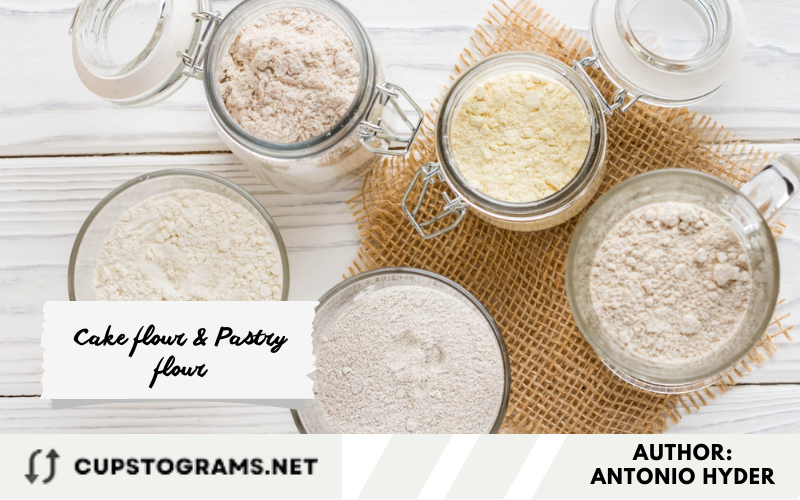
Have you noticed the pattern of how various flours are classified? What about cake or pastry flour?
Cake flour is utilized to bake cakes, as it contains a lower protein content in comparison to APF.
The goal with bread is for it to have an elastic texture due to its high gluten content. However, the cake should remain light and delicate in consistency.
If you want to bake something that needs a tender, crumbly, or flaky texture, then opt for cake flour, as it has around 9% protein content.
Pastry flour is even more preferred here, with only 8% of its total weight being in proteins. However, if fluffy pancakes are your game, then replace APF with cake flour or pastry flour, but not for making flatbreads.
FAQs Bread flour vs all purpose flour: What is the main difference? Can we substitute bread flour for all-purpose flour?
Is there a difference in the flavor of bread flour and APF?
APF may be used as a substitute for bread flour, yet the end product won’t possess the same texture. The boiled result will probably look lighter and a little bit smaller than expected, but the taste will be the same.
What can you expect from making bread with all-purpose flour?
The gluten network of bread dough made with APF is weaker because it has a lower protein content. It prevents the dough from stretching enough to create larger bubbles. This makes your loaf have smaller bubbles and a denser texture than if you had used a different flour with more protein.
Is bread flour a more nutritionally beneficial choice than all-purpose?
Bread flour has a higher folic acid and vitamin B-9 content. With 198 micrograms per serving, it has a little more than the 182 micrograms found in APF.
Its dietary allowance of folic acid falls between 34% and 50%, making it a great choice if you’re striving to reach your recommended daily intake.
How much bread flour is a substitution for 1 cup of all-purpose flour?
Absolutely! You can easily substitute one cup of bread flour for one cup of all-purpose flour, and vice versa. Keep in mind that the texture may not be quite as chewy when you use all-purpose flour instead of bread flour, but it will still turn out great!
Conclusion
In conclusion, bread flour and all purpose flour have their own unique characteristics and uses in baking. Sure, bread flour might be a better option for making yeast-based doughs like pizza and focaccia.
All-purpose flour, which has a lower protein content, is better suited for cakes and cookies. But knowing the difference between them is more than enough to get you started on your baking adventure. Thanks for reading at cupstograms.net!
Source: https://cupstograms.net
Category: Recipes



